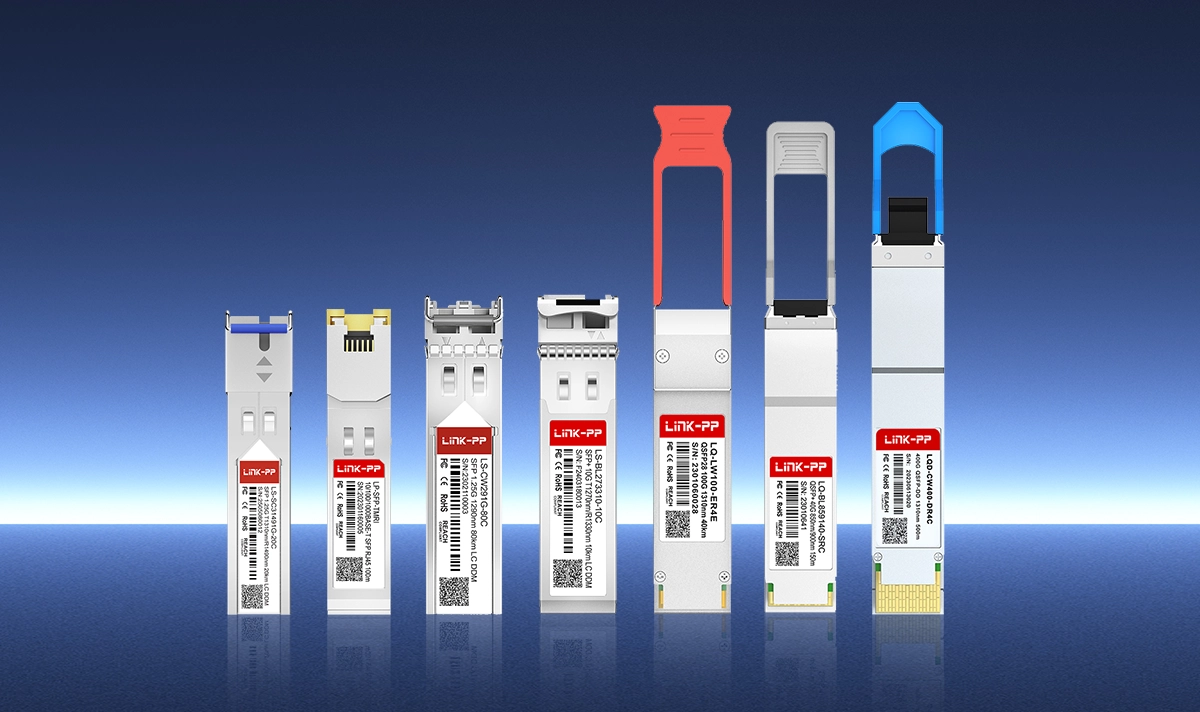
In the fast-paced world of optical technology, reliability isn't just a buzzword—it's a critical factor that can make or break your systems. Mean Time Between Failure (MTBF) is a key metric used to gauge the durability and performance of optical components, from fiber optic cables to advanced transceivers. This guide dives deep into what MTBF means in optics, why it matters for industries like telecommunications and data centers, and how it impacts your bottom line. We'll explore practical calculations, highlight the role of high-MTBF components in reducing downtime, and introduce how brands like LINK-PP are leading the charge with robust solutions. Whether you're an engineer, IT professional, or tech enthusiast, you'll walk away with actionable insights to enhance system reliability. Let's demystify MTBF and empower your optical networks!
🚀 What Exactly is MTBF?
MTBF stands for Mean Time Between Failure, and it's a cornerstone of reliability engineering. Simply put, it represents the average time a system or component functions between failures under normal operating conditions. For optical devices—such as lasers, amplifiers, or sensors—MTBF is typically expressed in hours (e.g., 100,000 hours). It's derived from historical data or accelerated life testing, using the formula:
MTBF = Total Operating Time / Number of Failures
For example, if a batch of optical transceivers runs for 500,000 hours with 5 failures, the MTBF would be 100,000 hours. However, it's crucial to note that MTBF doesn't predict the exact lifespan of a single unit; rather, it indicates the reliability of a population over time. In optics, this metric helps compare products, with higher MTBF values often correlating to better durability and lower total cost of ownership.
🚀 The Role of MTBF in Optical Systems
Optical systems, including fiber optic networks and photonic devices, rely on precision and stability. A low MTBF can lead to frequent disruptions, especially in critical applications like data centers or healthcare imaging. Key areas where MTBF shines include:
Fiber Optic Communications: High MTBF ensures minimal signal loss in transceivers and cables, supporting 5G networks and cloud computing.
Laser Systems: In medical or industrial lasers, MTBF impacts safety and efficiency, with standards like Telcordia GR-468 governing reliability.
Optical Sensors: Used in automotive or aerospace, these devices benefit from MTBF-driven designs to avoid costly recalls.
Moreover, MTBF intersects with other metrics like Mean Time To Repair (MTTR), forming a holistic view of system availability. For instance, an optical module with an MTBF of 200,000 hours and a low MTTR might achieve 99.999% uptime—a gold standard in industries reliant on optical network reliability.
🚀 A Deep Dive into Optical Modules and MTBF
Optical modules—such as transceivers and transponders—are vital components that convert electrical signals to light and vice versa, enabling high-speed data transmission. Their MTBF is a hot topic because failures here can cascade into network-wide issues. Typically, optical modules undergo rigorous testing to achieve MTBF ratings ranging from 100,000 to 500,000 hours, depending on the type (e.g., SFP, QSFP, or CFP2).
For example, the LINK-PP QSFP28-100G-LR4 Optical Transceiver is engineered for exceptional reliability, boasting an MTBF of over 400,000 hours. This makes it ideal for long-haul communications and data center applications, where high-MTBF optical modules reduce maintenance costs and enhance performance. The design incorporates advanced cooling and error-correction technologies, addressing common failure modes like overheating or signal degradation. By choosing products like this, you're not just buying a component—you're investing in peace of mind.

To put this into perspective, here's a table comparing MTBF values for different optical module types, including LINK-PP offerings:
Optical Module Type | Typical MTBF Range (Hours) | Common Applications | LINK-PP Model Example |
|---|---|---|---|
SFP+ Transceivers | 100,000 - 200,000 | Data Centers, LANs | |
QSFP28 Modules | 200,000 - 300,000 | High-Performance Computing | |
Active Optical Cables (AOCs) | 150,000 - 250,000 | Short-Range Interconnects |
🚀 How to Improve MTBF in Optical Designs
Boosting MTBF isn't just about picking the right components; it involves a strategic approach to design and maintenance. Here are some proven tips:
Use High-Quality Materials: Opt for components with proven durability, such as those from LINK-PP, which undergo stringent testing.
Implement Redundancy: In critical systems, redundant optical paths can compensate for failures, effectively increasing overall MTBF.
Monitor Environmental Factors: Heat and humidity are major culprits in optical failures—employ cooling systems and adhere to specified operating ranges.
Regular Predictive Maintenance: Use MTBF data to schedule inspections, reducing unexpected downtime.
Remember, a higher MTBF often translates to lower lifetime costs, making it a smart investment for scalable networks.
🚀 Conclusion: Elevate Your Optical Systems with MTBF Insights
Understanding MTBF in optics is more than an academic exercise—it's a practical tool for building resilient, high-performing systems. From defining the metric to applying it in optical modules like the LINK-PP QSFP28-100G-LR4, we've seen how MTBF drives reliability and cost savings. As technology evolves, focusing on metrics like MTBF will become even more critical for innovations in photonics and IoT devices.
Ready to enhance your optical network's reliability? 📞 Contact LINK-PP today to explore their range of high-MTBF optical modules and get a customized consultation. Visit our website link-pp.com or download our free whitepaper on "Maximizing MTBF in Fiber Optic Systems" to stay ahead of the curve!


